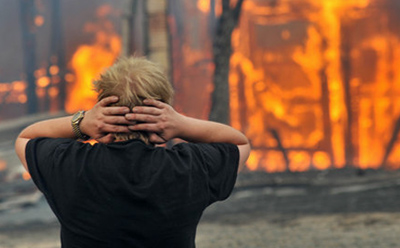Chapter 4
Story Structure




We have learned about making characters and creating a universe for them to live in. Now we will learn how to send them on their journey. Must stories follow certain typical formulas. Here is a simple description of the vast majority of stories in the world and throughout history. A character faces a problem and must solve the problem. In the process of solving the problem the character learns something and becomes a better person. Think of your favorite film, book or stage play. It probably fits the description just given.
There are certain steps or stages that you usually want to hit in a story. To keep your audience interested you will usually need to follow those stages in the right order. Stories can be unique and go against the formula, but if you do, than you will really need to know what you are doing. Unless you are really good, not following the stages in the right order makes your stories seem lost and aimless.
How is a story like a triangleSome of the earliest story analysis known from history comes from Aristotle. He showed how the structure of a story is much like a pyramid. Imagine the character starting at the bottom of the pyramid, going up to the tip and then going down again. |  |
Exposition
Exposition is the beginning of the story. This is where we meet the main character and see what kind of world they come from. We get to see what their life is like before the events of the story transform them. Consider whether the character starts off in a life that makes them happy, or in a life where they don't belong. Both ideas can work well. Perhaps they start with a happy life and something happens to upset things. Maybe their family dies or is killed. When that happy life is taken away the character will have a strong cause to fight for. The audience will identify with their loss and their desire to make things right again. On the other hand it also works well to create a character that is not happy with their current life. Maybe they aren't respected, or maybe their just restless like Belle in Beaty and the Beast saying;"There must be something more than this provincial life. We can also identify with a character who has big dreams or just a desire for a better life.
  | Notice the similarity between stories. To the left are two character in exposition going through similar feelings. They are both bored and restless in the beginning of the story and they are both gazing out into the horizon thinking of their desire for a more exciting life. They are both characters who start off in a world in which they don't belong and long for the adventure that awaits them. One character is from a fairytale fantasy and the other character is from a science fiction adventure, but both experience the real human emotion of longing. |
Inciting IncidentThe inciting incident is also called the initial incident. This is where the main conflict or problem is introduced. This a point at which something happens that changes the characters life. Something has to send them in a new direction and usually it's something bad. It's something they must respond to. It's a problem that they have to fix and to fix it they must put themselves into strange and dangerous territory. Common incidents include the murder of family members, the hero getting wrongly blamed for something, or someone getting kidnapped. The incident is something that makes the character change course. So going back to our triangle analogy, this is the event that gets them heading up the pyramid. Just as you walk up a real pyramid you increase your chances of getting hurt by falling, the same is true for the character metaphorically in the story. |  |
Rising Action
 | This is where the character is heading up the pyramid. These are the events leading up to the climax. Just as walking up a pyramid would put you in a more and more dangerous position, that's what the rising action does to the character. They get further into danger or difficulties. The problems become more complex. |
Climax
 | Just as things seem hopeless, a ray of light is found. This is the point in the story in which the hero realizes he or she can fight back. Things get as bad as they can and then hope is found. Sometimes they discover the evil creature has a weakness, or the hero discovers their own strength. Looking at the pyramid again, this is another change in direction. Now the hero thinks their might be a way to get back again. |
|  |



Resolution |  |
Activities

2. Can you think of your own story? Try making up a simple story that has all of those sections.
No comments:
Post a Comment